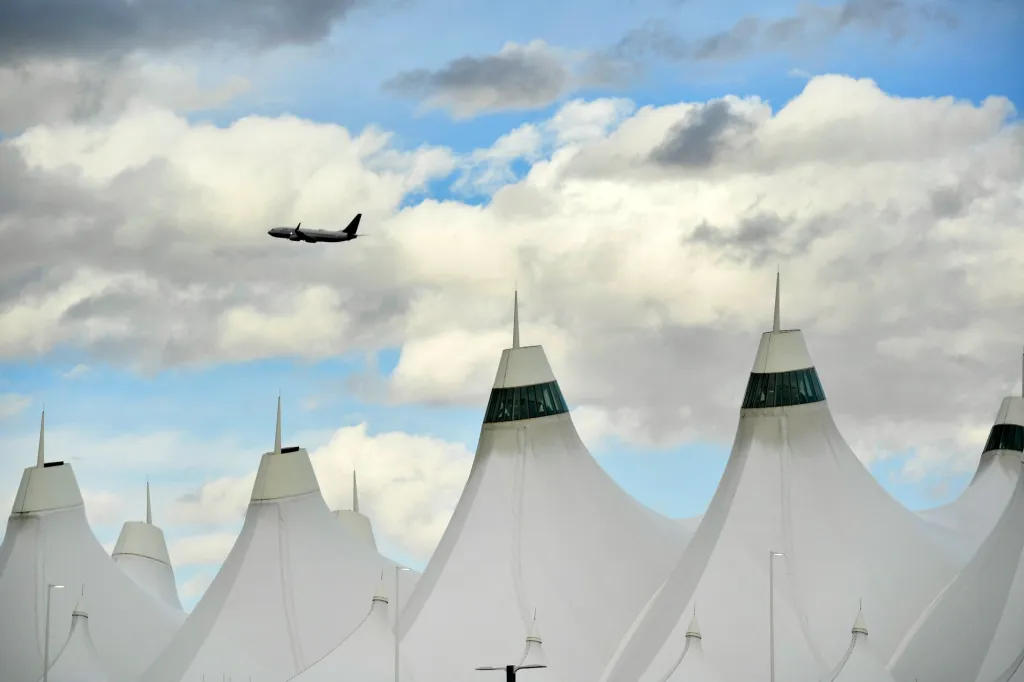Copyright Boulder Daily Camera

Denver International Airport has been spared so far, with minimal flight delays, as the 36-day federal government shutdown threatens to significantly disrupt air travel a few weeks before the nation’s expected Thanksgiving holiday travel surge. But DIA officials on Wednesday were bracing as the Trump administration ordered a reduction in air traffic at major hubs later this week. They took the unusual step of requesting a waiver from the Federal Aviation Administration to allow the use of airport revenues to support air traffic controllers working without pay. DIA later would seek reimbursement from the federal government once the shutdown is over. “This is a critical time for travel” and “staffing issues are already being identified at a number of airports,” DIA’s chief executive Phil Washington said in a statement. “As the shutdown drags on, air traffic controllers, in particular, are being stressed unnecessarily. …It is our hope that we can reduce the hardship on them by covering their wages during the shutdown.” Denver officials made the announcement after the Trump administration ordered a nationwide reduction in air traffic later this week that could affect thousands of flights at major hubs. On Wednesday, Transportation Secretary Sean Duffy and FAA officials announced a 10% reduction in allowable flight capacity starting Friday at 40 “high-volume” airports — a reduction they said would be necessary as federal air traffic controllers and security screeners work without pay. The cutback stands to impact thousands of flights nationwide because the FAA directs more than 44,000 flights daily, including commercial passenger flights, cargo planes and private aircraft. The purpose is “to make sure that we keep this airspace as safe as possible,” FAA Administrator Bryan Bedford said at a news conference. Federal officials were consulting with airlines and preparing a list of airports for release on Thursday. DIA‘s relatively clear sailing may not last, airport communications director Courtney Law told The Denver Post. “We know that could change at any point as the shutdown continues,” Law said. “We can’t speculate about the holidays, but we will continue to encourage passengers to arrive at the airport at least two hours prior to their boarding time and to check with their airlines for flight information.” DIA ranks among the busiest airports in the world with more than 82 million travelers a year and, as a centrally-located hub for United Airlines and others, offers travelers direct connections to more U.S. locations than any other airport. Denver airport officials said they’ve been “working with the FAA to understand specific impacts” of flight reductions and whether DIA will be one of the 40 airports. During the shutdown, flights at DIA haven’t been delayed more than usual, airport officials said, though there were notable delays one evening in early October when staffing shortages impacted air traffic control for Denver and two other airports. Travelers’ wait times for screening by Transportation Security Administration teams working without pay have stayed under 30 minutes, partly due to state-of-the-art new systems installed at DIA this year. DIA officials also launched a “food and essentials pantry” on Wednesday and appealed to the public for donations to help FAA air traffic controllers, TSA screeners, Customs and Border Protection agents, and others among the 1,800 federal employees who continue to work at the airport without pay due to the federal government shutdown. Airport officials said non-perishable food, toiletries, baby supplies and pet supplies can be dropped off at the Final Approach cellphone lot building along Peña Boulevard, at 7684 N. Wenatchee St., or at the information booth in the middle of DIA’s main terminal Great Hall on Level 5. Monetary donations and merchant gift cards also will be accepted — at the Airport Office Building located between the West Security Checkpoint and the A Bridge between 8 a.m. and 4 p.m. “As this shutdown continues, just getting to work and covering the everyday expenses of life becomes increasingly challenging for many of the 1,800 federal workers” at DIA, Washington said in his statement. “As an expression of our gratitude and support, we have set up a pantry and are collecting monetary contributions to help make this difficult time a little more bearable for our federal colleagues.” Air traffic controllers have been working unpaid since the shutdown began Oct. 1, and most have been on duty six days a week while putting in mandatory overtime. With some calling out of work due to frustration, taking second jobs or not having money for child care or gas, staffing shortages during some shifts have led to flight delays at a number of U.S. airports. Southwest Airlines said it was evaluating potential impacts to its flight schedule and would reach out as soon as possible to customers whose travel plans may be impacted. “We continue to urge Congress to immediately resolve its impasse and restore the National Airspace System to its full capacity,” the carrier said. The FAA regularly slows down or stops flights from taking off toward an airport due to weather conditions, equipment failures and technical problems. Staffing shortages also may lead to slowed or halted departures if other personnel can’t fill in or another facility can’t absorb some of the workload. Last weekend saw some of the worst staffing shortages of the shutdown, which became the longest on record early Wednesday. From Friday to Sunday evening, at least 39 different air traffic control facilities announced there was some potential for limited staffing, according to an Associated Press analysis of operations plans sent through the Air Traffic Control System Command Center system. The figure, which is likely an undercount, is well above the average for weekends before the shutdown During weekend periods from Jan. 1 to Sept. 30, the average number of airport towers, regional centers that oversee multiple airports and facilities that monitor traffic at higher altitudes announced the potential for staffing issues was 8.3, according to the AP analysis. But during the five weekend periods since the shutdown began on Oct. 1, the average more than tripled to 26.2 facilities. The Associated Press contributed to this report.



